Exploring the Realm of Polishing Compounds in Collectibles
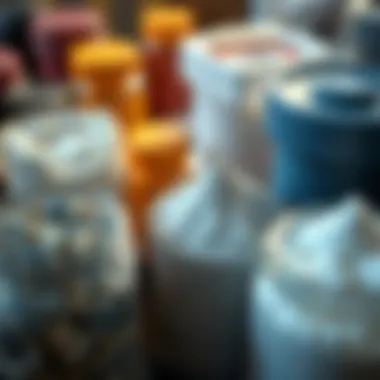
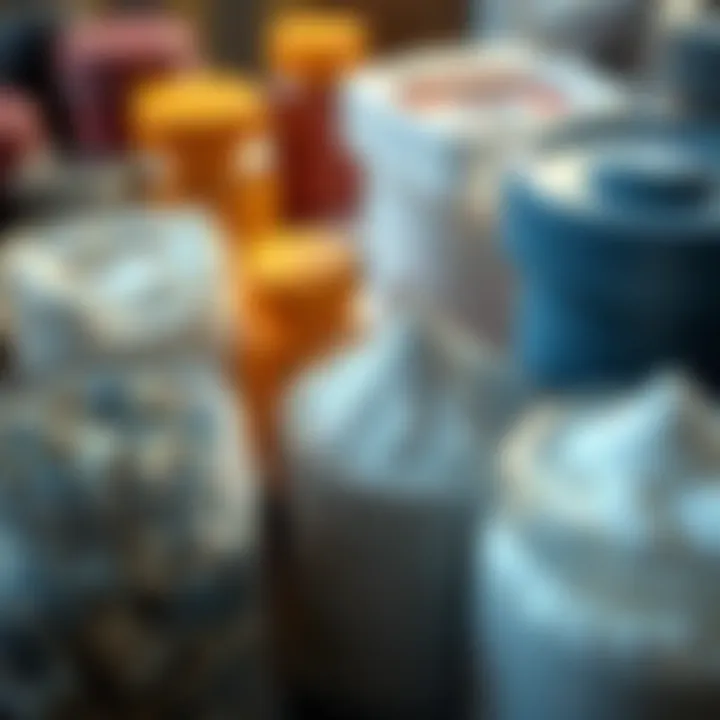
History and Origins
The history of polishing compounds mirrors the evolution of human craftsmanship. From the days when our ancestors meticulously crafted tools from stone, it becomes clear that polish wasn’t just an aesthetic choice; it was a necessary step in the quest for functionality and beauty. As civilization advanced, polishing techniques became more sophisticated, allowing artisans to produce superior collectibles, polished rocks, and fossils, enhancing their appeal and value.
Overview of Collectibles, Rocks, and Fossils
Collectibles can represent a myriad of categories, from coins and stamps reflecting historical significance to various natural specimens like minerals and fossils that tell stories of our Earth’s past. Rocks, while often taken for granted, hold intrinsic value both scientifically and artistically. For example, a beautifully polished agate not only dazzles the eye but also encapsulates millions of years of geological history. Fossils, on the other hand, serve as snapshots of extinct species, providing critical insight into past ecosystems. Thus, the craft of polishing these items is not merely about looks; it’s about preserving and celebrating their rich stories.
Historical Significance and Cultural Impact
Throughout history, many cultures have placed high value on polished objects. In ancient Egypt, polished stone artifacts were often associated with the divine and the afterlife. The Greeks and Romans employed polishing techniques to enhance sculptures and adorn their homes with glimmering materials. Fast forward to modern times, and we see an explosion of interest in geological collecting and home decor, with polished stones now commonly bordered on coffee tables as conversation starters. This ongoing journey underscores how polishing compounds not only elevate the visual aspect of these objects but also contribute profoundly to their perceived worth.
Identification and Classification
Identifying and classifying rocks and fossils requires a keen eye and some knowledge about mineral properties. Many collectors develop a personal system to categorize their holdings, be it by type, color, or geographical origin.
Guide to Identifying Rocks and Fossils
To begin identifying, familiarize yourself with some key attributes:
- Color: Various minerals exhibit a wide range of colors, which can signify their composition.
- Luster: Certain stones shine or reflect light differently; some may look glassy while others appear dull.
- Hardness: Using the Mohs scale is a reliable method to determine hardness. Try scratching your specimen with common materials.
- Texture: Observe the surface of the rock. Is it rough, smooth, or porous?
- Shape: The form can give clues regarding the geological processes that formed it.
Common Types and Variations
Collectors often come across several types of rocks, which can be further divided into categories:
- Igneous: Formed from cooled lava or magma; examples include granite and basalt.
- Sedimentary: Created from sediments compacted over time, such as limestone and sandstone.
- Metamorphic: Rocks that have changed due to heat and pressure, like marble and schist.
For fossils, familiarity with various types also helps:
- Trace Fossils: Evidence of activities, such as footprints or burrows.
- Body Fossils: Remnants of the actual organism, like bones or shells.
Our understanding of these classifications enhances both the collecting and polishing experiences, bridging the gap between raw specimens and refined art pieces.
"The art of polishing reflects not just the object, but the care and respect we afford to nature’s creations."
In summary, as we delve into the intricate world of polishing compounds, it’s vital to recognize their historical context and classification systems that guide collectors today. By appreciating the past and understanding identification routes, collectors can make informed choices in their polishing journeys.
Intro to Polishing Compounds
Polishing compounds play an essential role in bringing out the best in various materials, whether it be the lustrous finish on a piece of jewelry, the clarity of a gemstone, or the sleek surface of a polished fossil. Understanding these compounds isn't merely an academic exercise; it's an investment in the art of refinement and preservation. For rock and fossil collectors, mastering the intricacies of polishing compounds can significantly enhance the aesthetic appeal and longevity of their cherished pieces.
Definition and Importance
A polishing compound is a specially formulated substance made from abrasive particles suspended in a binder. These compounds serve to refine surfaces by removing imperfections, restoring shine, and providing enhanced clarity. They are crucial for achieving that immaculate finish that collectors often seek, contributing not only to visual appeal but also to the material's overall durability.
Think of it as a secret ingredient that can turn an ordinary rock into a show-stopping specimen, allowing the inherent beauty of the material to emerge. Collectors frequently utilize these compounds to ensure that the surfaces of their treasures are not only smooth but also capable of captivating attention. For instance, using the right compound can mean the difference between a dull appearance and one that sparkles under light, making this knowledge invaluable to anyone involved in the art of preservation.
Historical Context
The practice of polishing materials and artifacts can be traced back thousands of years. Ancient artisans often used natural abrasives such as sand, ash, and even extremely finely ground minerals to improve the surfaces of their tools and ceremonial objects. As civilizations evolved, so too did the methods and materials used in polishing.
The advent of synthetic abrasives in the late 19th century marked a watershed moment in polishing technology. Innovations such as aluminum oxide and silicon carbide revolutionized the industry, allowing for more consistent results and broader applications in various fields. This evolution paved the way for the modern formulations used today, combining chemistry with craftsmanship to achieve impressive results.
As polishing techniques and compounds have developed, they have become integral to the practices of collectors and lapidaries alike. From the early days of rudimentary polishing methods to the sophisticated compounds available now, understanding this historical context can provide valuable insight into why certain products are favored today. In short, polishing compounds are not just tools; they are part of a lineage that has refined the way we appreciate and care for our collections.
"To enhance a piece of nature's art, knowledge about its refinement is essential."
Collectively, these elements highlight the importance of polishing compounds in both historical and contemporary contexts, providing a foundation for understanding their role in the world of collecting and craftsmanship.
Types of Polishing Compounds
Understanding the different types of polishing compounds is crucial for anyone looking to enhance the appearance of various materials. Each type serves a specific purpose and can considerably affect the polishing process. When choosing the right compound, it’s important to consider the material you’re working with, the level of finish you desire, and the method of application. Some compounds are crafted for heavy-duty work, while others are ideal for delicate materials. The aim should always be to choose a compound that complements the task at hand, ensuring optimal results.
Abrasive vs. Non-Abrasive
Abrasive compounds typically contain particles that can remove material from a surface. They work by creating a friction surface that smooths and shines, making them more effective on tough surfaces like metals. However, this also means they can lead to over-polishing if not used carefully. A qualified user should be mindful of the pressure and duration of application.
Non-abrasive compounds lack the gritty texture and instead focus on enhancing the surface finish without removing material. They are often preferred for softer surfaces like plastics or for achieving a higher gloss on previously polished items. This distinction between the two types of compounds allows users to strategically select their tools based on the desired outcome.
Liquid vs. Paste
The texture of polishing compounds is another key consideration. Liquid compounds are generally easier to apply and can be more suitable for machine polishing. They tend to spread more evenly and can reach into finer details. Yet, they may require more careful handling to avoid oversaturation.
On the other hand, paste compounds can provide a thicker application, making them suitable for more controlled jobs. Their viscosity allows for a more targeted approach, minimizing waste. The choice between liquid and paste often boils down to the application method—whether it be hand or machine polishing—and the specific needs of the user.
Specialty Compounds for Different Materials
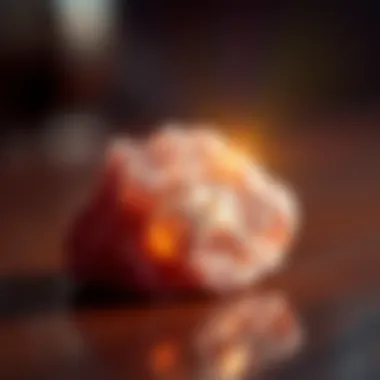
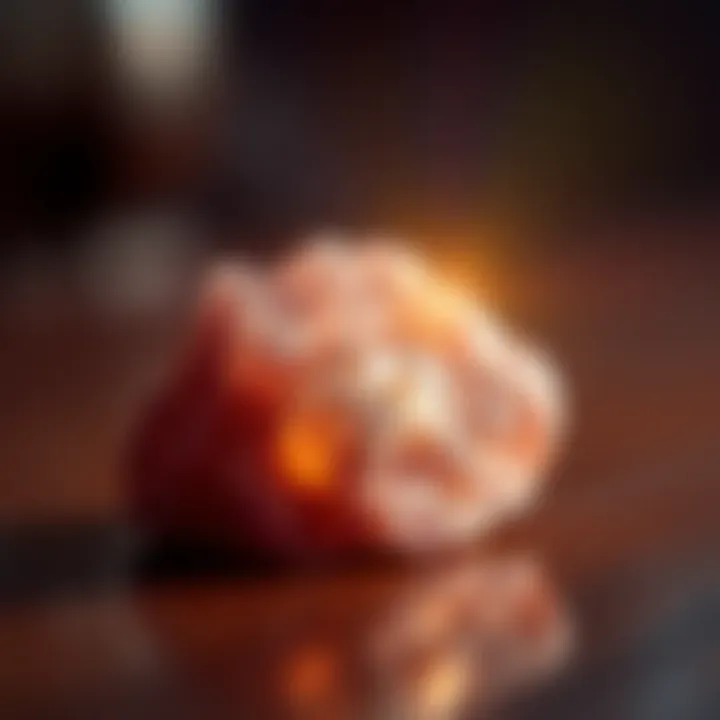
Metals
Polishing metals like aluminum, brass, and stainless steel requires specific compounds that can handle the hardness of these materials. A popular choice is a metal polish featuring abrasives that can effectively cut through oxidation and restore luster. The unique characteristic of most metal polishes is their ability to remove scratches while simultaneously adding a protective layer, making them highly sought after by collectors and restorers.
Plastics
When it comes to plastics, the right polishing compound must be gentle yet effective. Plastic surfaces can easily scratch or dull, so compounds designed for these materials are typically non-abrasive. They often have polishing agents that clean and restore gloss without risking damage. Selecting a plastic polish can yield excellent results, particularly for those with collectibles that feature clear acrylic or polycarbonate components.
Glass
Glass polishing compounds often contain fine abrasives that delicately restore clarity and shine. This is particularly important for gem and crystal collectors. Different residues or scratches can greatly diminish the visual appeal of glass pieces, so having the right compound is key. One of the distinctive features of glass-specific compounds is their precision formula, which allows for effective results without compromising the integrity of the glass.
Minerals and Fossils
For minerals and fossils, polishing compounds must cater to a variety of textures and hardness levels. The uniqueness of these materials often calls for specialty formulations that can address the specific types of stone without causing damage. A well-chosen compound can enhance the natural colors and patterns, making them aesthetically pleasing. Plus, many fossil polishes also contain compounds that help seal and protect the specimens from further degradation.
Chemistry of Polishing Compounds
Understanding the chemistry behind polishing compounds is fundamental for collectors and hobbyists seeking to enhance the aesthetic quality of their materials. The intricate blend of ingredients in these compounds greatly influences their effectiveness, durability, and suitability for specific applications. This section will explore the vital components of polishing compounds, focusing on their distinct roles in the polishing process and the benefits they bring to the table.
Key Ingredients and Their Functions
Abrasives
Abrasives are the backbone of polishing compounds. They are the gritty materials that actually perform the mechanical action of removing surface imperfections. Common abrasives include aluminum oxide, silicon carbide, and even natural materials like garnet. The key characteristic of abrasives is their hardness, which directly affects their ability to cut through various materials.
When choosing an abrasive for polishing tasks, it is essential to consider the hardness of the material being polished. For instance, aluminum oxide is a popular choice because it effectively polishes metals, while silicon carbide excels in smoothing plastics. A unique feature of abrasives is their ability to size, which contributes to the fineness of the finish: finer abrasives produce a smoother, more polished surface but may require more time to complete the job.
One advantage of using abrasives is their versatility. However, using abrasives that are too coarse can cause scratching or damage, which is a significant disadvantage in delicate projects.
Binders
Binders play a crucial role in holding the abrasive particles together. They form a matrix that ensures even distribution and allows the compound to adhere well to tools during the polishing process. Common binders include waxes, resins, and even water-based agents. An important characteristic of binders is their ability to provide a consistent, controlled release of abrasives during polishing.
Binders are beneficial because they can significantly affect the compound's usability; for example, compounds with a waxy binder might be easier to apply but may leave a residue. A notable feature of certain resins is their durability, allowing them to withstand high pressures and temperatures, leading to a long-lasting polishing effect. However, if a binder is too hard, it can inhibit the performance of the abrasive, rendering the compound ineffective.
Additives
Additives are additional ingredients in polishing compounds that enhance their performance or stability. Common examples are surfactants, which help the compound spread evenly, and anti-corrosives that protect the surfaces being polished. One key characteristic of additives is their ability to improve the overall effectiveness of the compound by allowing abrasives to work more efficiently and maintain the desired finish without hindrance.
Additives serve as powerful allies in the polishing process. For instance, a compound with effective surfactants can reduce surface tension, allowing for a smoother application. The unique feature of additives lies in their customizability; different additives can be mixed to create compounds tailored for specific materials or desired outcomes. However, the wrong choice of additives can lead to issues like unwanted chemical reactions or residue, which can affect the final appearance of the polished item.
The Polishing Process Explained
The actual polishing process comprises several steps where chemistry comes into play. When a polishing compound is applied, the combination of abrasives, binders, and additives will determine how efficiently and effectively the material can be polished. The right balance among these components ensures that collectors can achieve finishes that not only look good but preserve the integrity of their collectibles. By understanding the chemistry behind polishing compounds, hobbyists can make informed decisions about the products they use and the results they can expect.
Selecting the Right Polishing Compound
Choosing the right polishing compound isn’t just a matter of grabbing the first tube you spot at the hardware store. It’s crucial. Selecting the right polishing compound can make or break your project, especially for collectors who value quality and precision. The benefits of selecting the appropriate compound extend beyond just achieving a shiny surface. It affects the longevity, durability, and overall aesthetic of your collectible pieces, whether they be fossils, minerals, or manmade materials.
Several key elements play a role in this decision-making process. First and foremost is material compatibility. Different materials require specific compounds to achieve the best results without damaging the surface. For example, a polishing compound designed for metal cannot simply be adapted for use on glass or plastic. Understanding these materials can help you avoid costly mistakes.
Another factor is understanding the desired finish and surface quality you want to achieve. Whether you're after a high-gloss shine or a more subdued satin finish, each desired outcome demands a unique approach in polishing.
Always remember, a well-selected compound preserves the integrity of your collectible while enhancing its appeal.
Material Compatibility
Material compatibility is the cornerstone of effective polishing. Not all compounds work well with all materials. For instance, if you're polishing a rare fossil, using a compound that is too abrasive can chip or scratch the surface, rendering the piece less valuable. Similarly, when handling gemstones, a gentle touch with non-abrasive compounds can ensure the luster remains intact.
Here’s a breakdown of common materials and suitable compounds:
- Metals: Use harder abrasives like aluminum oxide or cerium oxide for a polished, reflective finish.
- Plastics: Non-abrasive compounds like fine cutting compound or even toothpaste can give a smooth surface without scarring.
- Glass: Cerium oxide is often the go-to, ensuring clarity and shine without scratching.
- Minerals and Fossils: It's recommended to use specific micro-abrasives that allow for polishing without interference with their natural structure.
When selecting a polishing compound, consider conducting a small test on an inconspicuous area to ensure compatibility.
Desired Finish and Surface Quality
Achieving the desired finish and surface quality is another pivotal aspect when choosing your polishing compound. The texture and look of your collectible can significantly impact its perceived value. Are you looking for a mirror-like gloss or a natural matte finish? This distinction will guide you in selecting the appropriate type of compound.
For a high-gloss finish, consider:
- Cerium Oxide for glass or gemstones.
- Aluminum Oxide for metal surfaces.
For a satin or low-gloss finish, milder polishing compounds like:
- Felt wheels with a non-abrasive polishing cream work well for materials requiring a gentler touch.
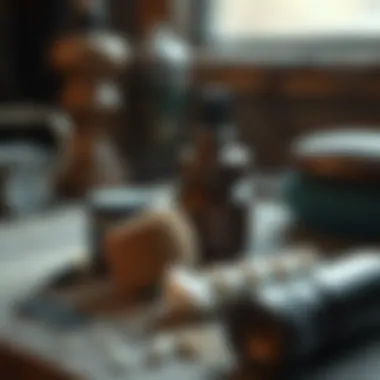
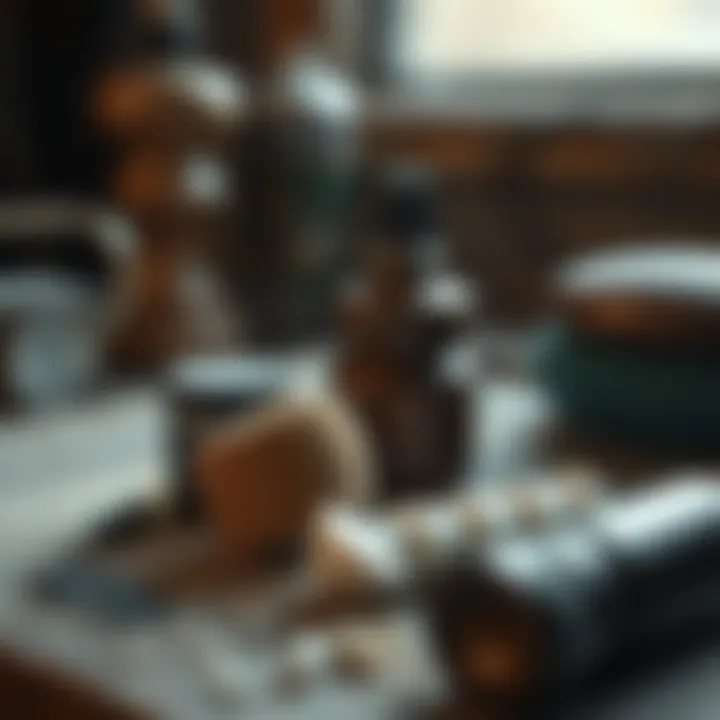
Additionally, take into account the durability and longevity of the finish. Some compounds may achieve quickly noticeable results, but they can wear off faster, demanding re-polishing sooner than alternatives. Your choice should not just focus on instant gratification but also on the lasting quality of your collectible.
Each of these factors—material compatibility and achieving the desired finish—intertwines significantly. It necessitates a thoughtful approach, tailored to the specific properties of the items you’re polishing. The right balance will lead to not only enhancing the beauty of your pieces but also maintaining their historical and monetary value.
Application Techniques for Polishing
In the realm of polishing, the techniques employed can make a world of difference. The art and science of polishing isn’t merely about achieving a shiny surface, but about selecting the right method for the specific material being treated. Different approaches yield varying results, and understanding these techniques can significantly enhance the quality of your work. The essence of mastering polishing techniques lies in recognizing the interplay between the compound, the material, and the tool used.
Using Hand Tools and Equipment
Hand tools offer a touch of traditional craftsmanship that machines can’t quite replicate. Whether you’re dealing with delicate fossils or rugged mineral specimens, utilizing hand tools requires a deft hand and a keen eye. For instance, a simple hand-held polisher or a foam pad can work wonders for fine details on softer materials.
- Advantages of Hand Tools:
- Precision: Hand tools allow for greater control over the polishing process, letting you get into those nooks and crannies that machines might miss.
- Customization: You can easily adjust pressure and speed according to the material’s sensitivity.
- Cost-Effective: Often cheaper than electric options, hand tools can be a great entry point for hobbyists.
It's essential, however, to consider the build quality of the tools you select. A well-made tool can facilitate smoother operations and ultimately lead to a superior finish. Don't skimp on quality; after all, you're investing time and effort into your polishing endeavors.
Polishing Machines and Their Uses
While hand tools serve their purpose well, polishing machines can elevate your work to another level, especially when dealing with larger items or tougher materials. Machines often provide uniformity and efficiency that hand polishing simply can't match. Using a rotary polisher, for example, can minimize human error and speed up the process.
- Types of Polishing Machines:
- Rotary Polishers: Great for flat surfaces and large areas; they operate at high speeds, making them effective for heavy material removal.
- Orbital Polishers: These are ideal for minimizing swirl marks and achieving a fine finish. They provide orbital motion that goes in a circular pattern while slightly tilting to create an alternating spin.
- Belt Sanders: Best for your roughest surfaces, they quickly remove material but require careful handling to avoid over-polishing.
When opting for machines, it’s crucial to adapt your technique based on the machine type. A rotary tool might press too hard and create scratches if not used correctly. In contrast, an orbital polisher requires a light hand for the best results.
"Choosing the right tool is like picking the right brush for painting; it shapes the outcome of your work fundamentally."
Best Practices for Effective Polishing
Understanding the best practices for effective polishing is essential for anyone looking to enhance the appearance and longevity of their collectibles, especially for avid rock and fossil collectors. Improper techniques can lead to dissatisfaction or even damage, while a careful approach can yield a stunning luster that showcases every facet of a specimen. In this section, we will break down the key elements crucial for optimal polishing results, encompassing surface preparation, proper application of polishing compounds, and tips to achieve the desired finish. These practices not only help to achieve a polished aesthetic but also protect the integrity of your cherished items.
Surface Preparation
Before jumping into the actual polishing, surface preparation stands as the unsung hero of the process. It’s like preparing a canvas before painting; missing this step could result in blemishes that tarnish the final outcome. Properly preparing the surface involves a few steps:
- Cleaning: Start with a thorough cleaning to remove dust, dirt, or oils. Depending on the material, use suitable cleaners ranging from mild soapy water for certain types of minerals to specific solvents for metals.
- Drying: After cleaning, ensure that the item is completely dry. Even a small amount of moisture can impede the effectiveness of the polishing compound.
- Inspecting: Give the item a good once-over for any imperfections or scratches. Knowing where these flaws lie allows for targeted polishing, especially in tougher spots.
Each of these steps reinforces the effectiveness of the subsequent polishing procedure, leading to a healthier shine and better overall results.
Applying the Compound
Now that the stage is set, applying the polishing compound requires proper technique and patience. It's a delicate dance between just the right amount and the right application method. Here are some considerations:
- Choosing the Right Compound: Before anything, ensure you’ve selected a compound suited for your specific material. Some compounds work wonders on metals, while others may favor plastics or glass. Always read the manufacturer instructions.
- Dab, Don’t Slather: Applying moderate amounts of the compound is crucial. A thick slather may seem like it will work better, but too much can lead to a mess and uneven polishing. A small dab on the application tool usually suffices.
- Application Technique: Use a soft cloth, applicator pad, or even a specialized polishing tool, depending on the surface and compound. Apply the compound using gentle, circular motions, straying away from any aggressive techniques that could scratch the surface.
Pro Tip: If you're working with particularly delicate pieces, experiment on a less valuable item first to gauge the appropriate technique without jeopardizing the original piece.
Achieving the Desired Finish
Achieving that perfect finish is often where the magic happens. Paying attention to the finer details can elevate a polished item from decent to spectacular. Here are some pointers to keep in mind:
- Finishing Techniques: After the initial polishing, consider using a finer polish or finishing compound for a final touch. This step can produce that glossy look and enhance color depth.
- Final Buffing: A gentle final buff with a clean, soft cloth will bring out a brilliant shine. Ensure the cloth is free from any product residue to prevent smudging.
- Inspection Under Light: Examine the item under natural light to spot any areas that might need additional work. Sometimes, what looks good under artificial light can reveal imperfections in daylight.
By following these best practices, collectors can not only refine their polishing skills but also maximize the beauty of their precious items, ensuring that every specimen reflects the care and attention invested in its upkeep.
"A well-polished specimen not only shines brighter but tells a story of craftsmanship and respect for the natural beauty of the material."
For anyone serious about collecting, these polishing practices become the very foundation of maintaining and showcasing their passion.
Safety Considerations
When working with polishing compounds, safety is not just a concern, it’s a necessity. The variety of chemicals involved in the formulation of these compounds can pose significant risks if mishandled. Whether it's the dust generated during a polishing process or the potential skin and eye irritation from chemical exposure, following safety guidelines is crucial. Understanding how to properly protect oneself will ensure not only a smooth polishing experience but also a long and healthy relationship with this fascinating hobby.
Personal Protective Equipment
Using personal protective equipment (PPE) is one of the simplest and most effective ways to mitigate risks associated with polishing compounds. Here’s a rundown of the essential gear you should have:
- Safety Goggles: A pair of clear, impact-resistant goggles can protect your eyes from flying particles and splashes of liquid compounds. It’s no joke when folks say, "an ounce of prevention is worth a pound of cure."
- Face Mask or Respirator: Dust and fumes can be a real issue, especially if you’re using fine powders. A simple dust mask may not suffice. Opt for a respirator equipped with appropriate filters to safeguard your lungs. The last thing you want is to be gasping for air mid-project.
- Gloves: Depending on the compounds you use, nitrile or latex gloves should be worn. They offer a barrier between your skin and potentially harmful substances. Remember, skin irritation is no picnic and it’s best avoided altogether.
- Apron or Protective Clothing: Spills happen, and sometimes they happen quickly. Wearing an apron or dedicated work clothes can help keep harmful materials off your skin.
PPE may feel cumbersome at times, but it’s better to don a bit of gear than end up with a nasty surprise once the dust settles.
Handling and Storage Guidelines
Proper handling and storage are vital to ensuring safety and prolonging the effectiveness of polishing compounds. Here are several considerations to keep in mind:
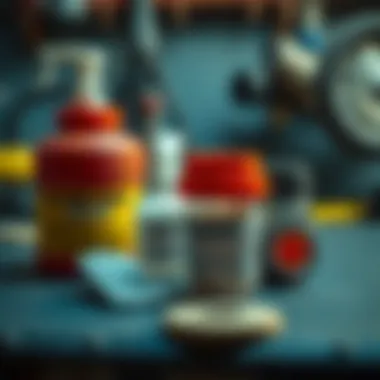
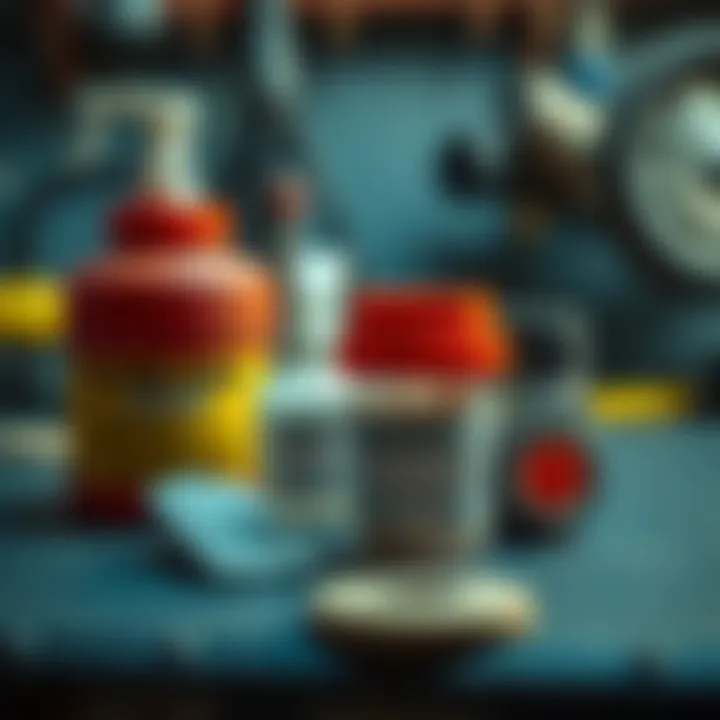
- Read Labels and Safety Data Sheets: Before ever diving into the polishing process, familiarize yourself with the labels and any corresponding Safety Data Sheets (SDS). Knowing the risks associated with each compound can help you plan accordingly.
- Keep Containers Tightly Sealed: Always store polishing compounds in their original containers with lids firmly in place. This prevents spills and limits exposure to air and moisture, which can degrade the product over time.
- Cool, Dry Storage: Polishing compounds should be stored in a cool, dry place, away from direct sunlight. Extreme temperatures can alter the chemical makeup, leading to compromised performance.
- Avoid Mixing Compounds: Mixing different polishing compounds can result in unpredictable chemical reactions. Stick to one compound at a time, especially if the manufacturer's guidelines caution against mixing.
- Dispose of Unused Products Responsibly: When your project is done, remember to dispose of any leftover materials as per local regulations. Many areas have specific guidelines to prevent environmental contamination.
"Being prepared is a key component of success. A stitch in time saves nine; don’t wait until it’s too late to think about safety."
Common Challenges and Solutions
Polishing, while a rewarding endeavor, does come with its fair share of hurdles that can trip up even the most skilled enthusiasts. Understanding these challenges and their solutions is crucial for anyone looking to achieve the perfect finish on rocks, fossils, or any collectible. We will explore two prominent issues: over-polishing and the misselection of compounds. Addressing these will not only enhance the experience of polishing but also safeguard the integrity of your valued pieces.
Over-Polishing and Its Consequences
Over-polishing is more common than one might think, especially among those eager to see a shine. It is the act of polishing a surface beyond its ability to handle, leading to damage rather than enhancement. This can result in a dull, uneven appearance or even scratches when too much material is removed. Stone and mineral specimens, for instance, can lose their natural luster.
Consequences of Over-Polishing:
- Surface Damage: Loss of unique features that define a rock or fossil, making it less appealing.
- Color Disruption: Some materials may become lighter or change color, diminishing their natural beauty.
- Structural Integrity: Over-polishing can weaken the structure, making it vulnerable to future damage.
To avoid this pitfall, it’s essential to follow a few strategies:
- Test First: Always test a small, inconspicuous area to gauge how the material reacts.
- Use Appropriate Compound Grit: Start with a finer grit and progress gradually. It’s better to polish in stages, inspecting after each one.
- Regular Breaks: Take breaks during polishing to let the piece cool down and avoid overheating through friction.
"Polishing is like storytelling; if you go too far, you may lose the essence of the tale you wish to tell."
Choosing the Wrong Compound
Selecting the wrong polishing compound is a blunder that can set any polishing project back significantly. Different materials require specific compounds to achieve optimal results. For example, using a compound meant for metals on delicate glass may lead to disastrous results—scratched surfaces and shattered pieces are all too common.
Common Mistakes in Choosing Compounds:
- Ignorance of Material Needs: Assuming all compounds can work on every type of material can lead to significant mishaps.
- Ignoring Compound Formulation: Some compounds are designed for specific finish types. Understanding whether your goal is a high gloss or a satin finish is integral.
- Overreliance on General Advice: While forums and communities can offer tips, basing your choice solely on anecdotal evidence may lead to poor outcomes.
To mitigate these risks, the following practices can be useful:
- Research: Before starting your project, spend some time researching materials and the appropriate compounds for them. Websites like Wikipedia and Britannica offer valuable insights.
- Consult with Experts: Sometimes, seeking advice from seasoned collectors on forums such as Reddit can yield useful recommendations tailored to your specific needs.
- Keep a Reference Guide: It can be beneficial to maintain a guide of compounds and their intended uses, ensuring you have the correct tools at your disposal.
By addressing these challenges thoughtfully, collectors can not only enhance their polishing skills but maintain the beautiful characteristics of their cherished specimens.
Innovations in Polishing Technology
In the ever-evolving landscape of polishing compounds, the realm of innovation holds paramount significance. These advancements don't merely tweak existing formulas; they redefine how collectors and professionals alike approach the craft of polishing. As rock and fossil enthusiasts continually seek to elevate the aesthetic appeal of their cherished specimens, the latest technologies and methodologies in polishing present a treasure trove of opportunities.
Advancements in Compound Formulations
Modern advancements in polishing compound formulations have been nothing short of revolutionary. One key area of focus has been the development of hybrid compounds that combine the best characteristics of abrasive and non-abrasive materials. This creates a compound that can effectively smooth a surface while minimizing the potential for scratches. For instance, certain new compounds incorporate micro-ceramic particles that not only enhance the polish but also increase durability against wear and oxidation.
Moreover, innovations in binder systems allow for compounds that remain stable across a wider range of temperatures and conditions. This stability is crucial, especially when working with sensitive materials that may warp or react adversely to heat. In addition, some manufacturers have been experimenting with bio-based binders, reflecting a growing awareness towards environmental impact.
These advancements often revolve around:
- Reduction of pollutants: New formulations strive to eliminate harmful solvents, making compounds less toxic and more user-friendly.
- Customizability: Some manufacturers now offer compounds tailored to specific materials, helping collectors achieve exactly the finish they desire without unnecessary trials and errors.
Such innovations not only make the polishing process more efficient but also enhance the final appearance of the material, bringing out colors and details that collectors cherish.
Sustainable Practices in Polishing
As we look to the future, integrating sustainable practices into polishing technology has become a critical consideration. Collectors are increasingly aware of the environmental impact of their activities, and this awareness has sparked a demand for eco-friendly polishing solutions.
From sourcing raw materials to the disposal of waste, sustainability interlaces every step of the polishing process. Companies are adopting practices such as:
- Using renewable resources: Many manufacturers are now utilizing plant-based compounds and biodegradable materials, addressing concerns over chemical waste.
- Reducing energy consumption: Innovative techniques, including the use of energy-efficient machinery, minimize electricity usage during the polishing process.
- Recycling waste materials: Efforts to incorporate recycled materials into new polishing compounds not only reduce waste but also lower the carbon footprint associated with manufacturing.
Locking into these sustainable practices, aside from ethical responsibility, can also forge stronger connections within the collecting community, as more individuals seek to align their passions with environmentally conscious choices.
"A cleaner path to polish is not just a trend, it's a responsibility that elevates our craft and our planet." This sentiment resonates deeply within the polishing community, highlighting how technology and sustainability can merge to create a future that respects both artistry and the Earth.
In summary, the innovations in polishing technology reflect a significant shift towards enhancing performance while embracing a sustainable ethos. Collectors and professionals are thus equipped not only with superior tools but also with the knowledge that their craft can be pursued with care for the environment.
Ending and Future Prospects
The exploration of polishing compounds is more than just a technical pursuit; it intersects art, science, and practical knowledge. As we've seen throughout this article, polishing compounds play a crucial role in enhancing the aesthetic qualities of various materials, especially for collectors focused on rocks and fossils. The proper selection and application of these compounds can elevate the appearance of a mineral specimen from ordinary to extraordinary. Understanding the materials involved, their respective benefits, and the technique of application empowers collectors to preserve and showcase their treasures.
Moreover, the discussions on innovations in polishing technology point toward a future that holds promise for even better performance and sustainability. As the demand for eco-friendly products increases, we can anticipate that manufacturers will focus more on sustainable practices in their formulations. This shift will not only benefit the environment but also give collectors the peace of mind that they are using responsible products as they tend to their collections.
Furthermore, keeping safety at the forefront ensures that users are equipped to handle these substances with care, avoiding unnecessary risks in what should be an enjoyable hobby. Matters like personal protective equipment and safe storage are fundamental considerations that cannot be overlooked.
In essence, the future of polishing compounds appears to be bright and centered on innovation, environmental considerations, and user safety. As technology continues to advance, so too will the methods and effectiveness of polishing, leading to enhanced results that spark joy among mineral and fossil collectors alike.
Summary of Key Points
- Definition: Polishing compounds are essential in refining the surface finishes of materials, making them look more appealing.
- Types: There's a variety of polishing compounds available, including abrasive and non-abrasive options tailored to specific materials.
- Application Techniques: Understanding the proper techniques, whether using hand tools or machines, ensures optimal results.
- Safety: Personal protection and safe handling guidelines are crucial when working with chemical products.
- Future Innovations: Advancements in formulation and a shift towards sustainable practices are vital for the evolving landscape of polishing compounds.
Looking Ahead
Looking ahead, it's clear that the world of polishing compounds is set for transformative growth. Currently, a surge in grassroots movements advocating for eco-conscious and socially responsible practices reflects a societal shift that's impossible to ignore. A key trend might include an increase in bio-based compounds that utilize natural ingredients rather than harsh chemicals, which could become the norm for environmentally responsible collectors.
The integration of technology into polishing techniques is another area ripe for exploration. Imagine smart polishing devices that could adapt power and speed according to the material's properties, providing more consistent results while reducing the risk of over-polishing. Education will also play a pivotal role. As more collectors engage in the hobby, sharing best practices through platforms such as Reddit and specialized collector forums could enhance the collective knowledge within the community.



